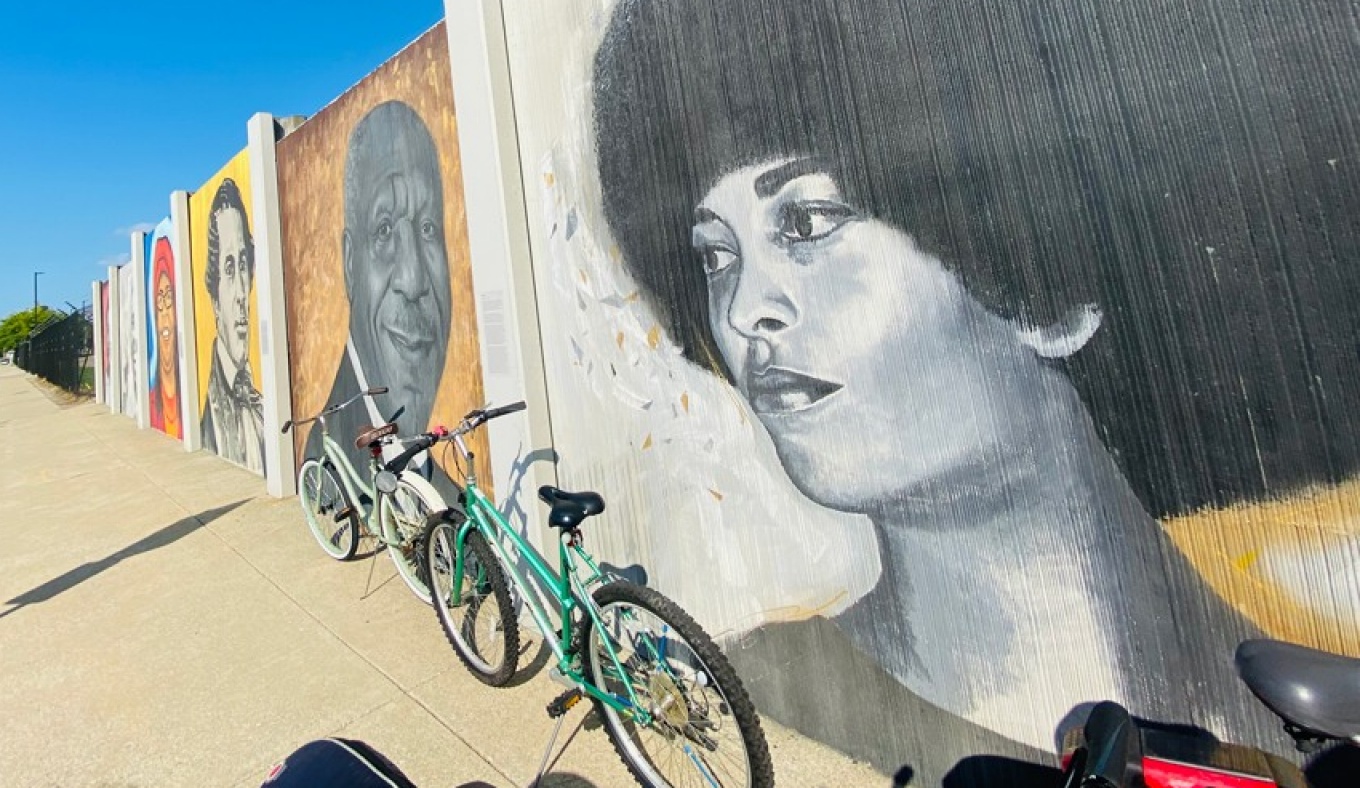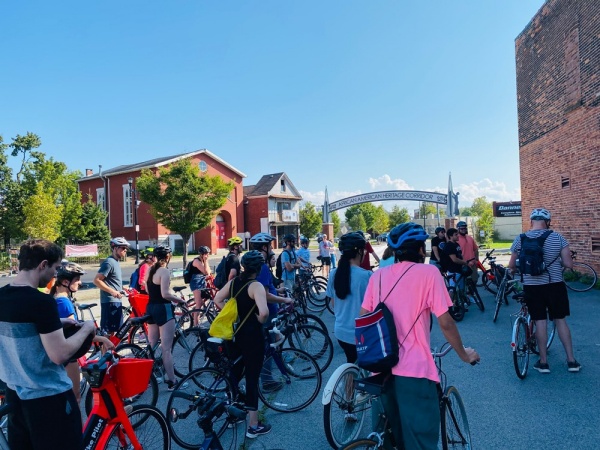

(Photos courtesy Noemi Waight)
Published February 8, 2022
BY MICHELLE KEARNS
Cycling to transform teaching and learning in teacher education

In the years after Noemi Waight, associate professor of science education, moved to Buffalo from Illinois, she got to know her new home by bicycling with community groups. The experience gave her the idea to take graduate pre-service students on cycling explorations to learn more about their community and the science resources that can make classroom lessons more engaging.
The concept came to fruition four years ago when she first collaborated with Sarah A. Robert, associate professor and director of social studies education. Each fall, the two Graduate School of Education faculty members lead science and social studies education students on a bicycle journey through Buffalo. The ride allows students to explore destinations that illustrate the city’s social history, like the Underground Railroad, along with science-related points of interest like the Niagara River at Broderick Park.
“This collaboration was born out of this idea that we wanted our students to learn about their communities, to uncover the assets within urban communities,” said Waight. “I wanted my students to be able to teach beyond the walls of the classroom and be able to access the STEM phenomena that is in the community.”
They call the annual outing “Uncovering STEM Phenomena and Social Studies Understanding in the Buffalo Urban Community.” Coordinated with the cycling nonprofit Slow Roll Buffalo, last year’s ride drew 55 students and lasted three hours.
“We talked about redlining and the history of institutional segregation. Then, we rode to the other side of Main Street [and saw] the lack of trees, the amount of vacant land from demolished homes and disinvested neighborhoods. It was clear that they were learning about this in the classroom and then bearing witness to it on the bicycle,” said Seamus Gallivan, co-founder of Slow Roll Buffalo.
Waight and Robert also decided to show students historical landmarks, like the Colored Musicians Club, the Buffalo Maritime Center and the Michigan Street African American Heritage Corridor. Robert hoped that visiting these destinations would inspire students to consider new approaches to social studies education. “Consistently, social studies is ranked as the least favorite subject among high school students,” Robert said. “We have this challenge to create a more enlivened social studies curriculum.”
The most recent cycling trip inspired GSE students to reflect on their experiences and future teaching approaches. One student said the instruments on view at the Colored Musicians Club connected to learning about sound waves in the physics curriculum: “This example provides the crossover of science and social studies… an out-of-the-box way to teach science and how it may relate to our community and its history.”
Another student elaborated on a social-studies-related idea: “Going to school in such proximity to African American history would inspire students to learn about African American history, heritage, culture, and place in American society… It was truly a great reminder that field trips don’t necessarily require busses or need to be an all-day affair. Rather, field trips can take place just across the street from the school. But teachers clearly need to be in the know about a community’s history and landmarks.”
The cycling journey exemplifies Waight’s belief that communities and neighborhoods around schools are assets and can be thought of as lab spaces, with historical, cultural and science elements that should be included in lessons. “It makes the environment even richer for learning,” she said. “Science is really about doing. When students get to do science, they are higher performers.”
Robert shares a similar philosophy. Throughout her career, which has taken her to universities in Wisconsin, California and Argentina, she has integrated first-hand, field-trip experiences into her teaching. “Revealing real-life examples of textbook explanations about segregation, redlining and urban revitalization should also help improve the reputation of social studies,” she said. Now, cycling adds new depth to her approach.
Waight and Robert plan to continue using bicycle excursions with their students to explain the importance of developing curricula that reflects subject concepts and their connections to lived experiences and local neighborhoods. “The students are having a very different experience of the city when we’re on bikes than if we were walking,” said Robert. “The bike has just opened up the students’ eyes to spaces that they think they know.”
Tuesday News Briefs feature the stories of the Graduate School of Education faculty, students and alumni who are engaged in their communities and making an impact through their hard work, dedication and research initiatives. If you have a story to share, please email us with the details for consideration as a future news feature.
